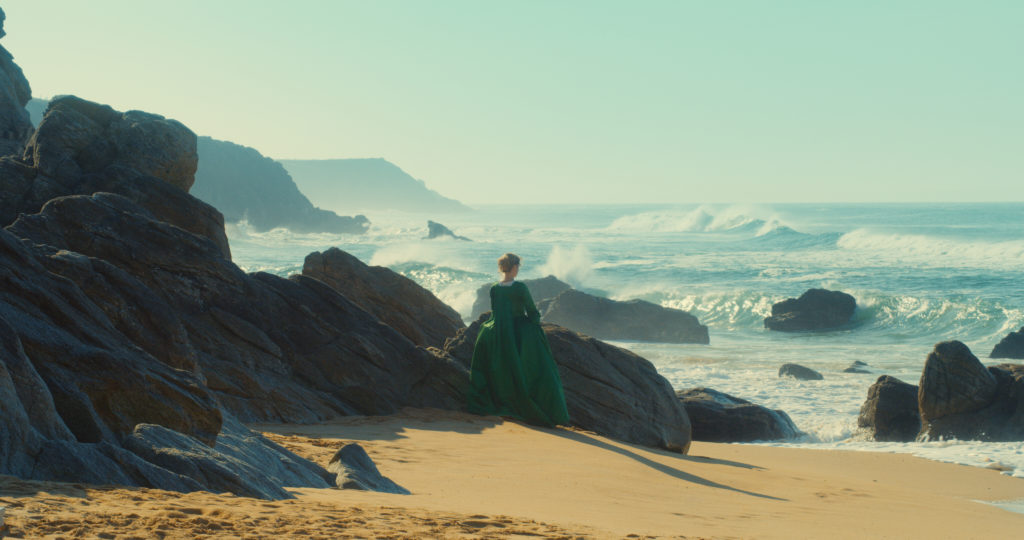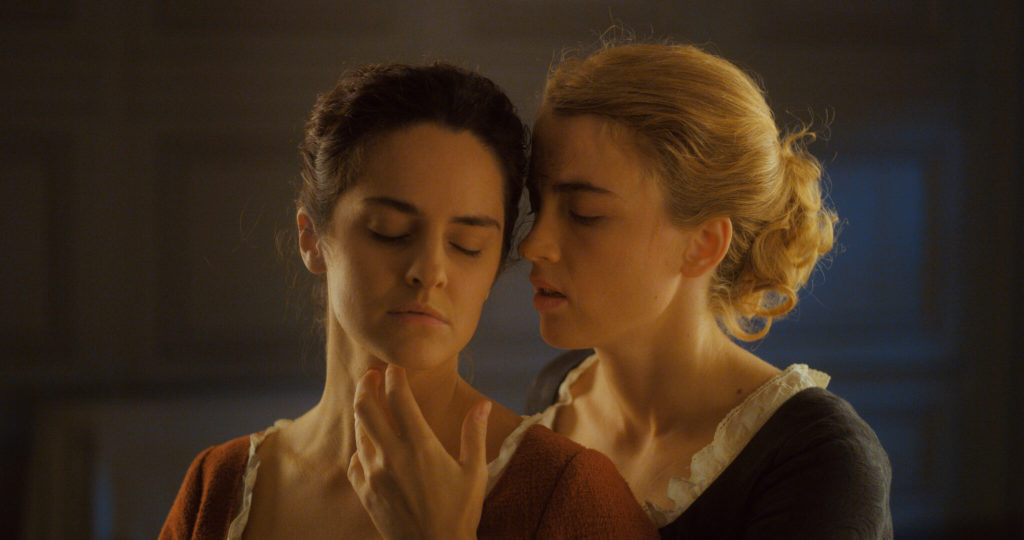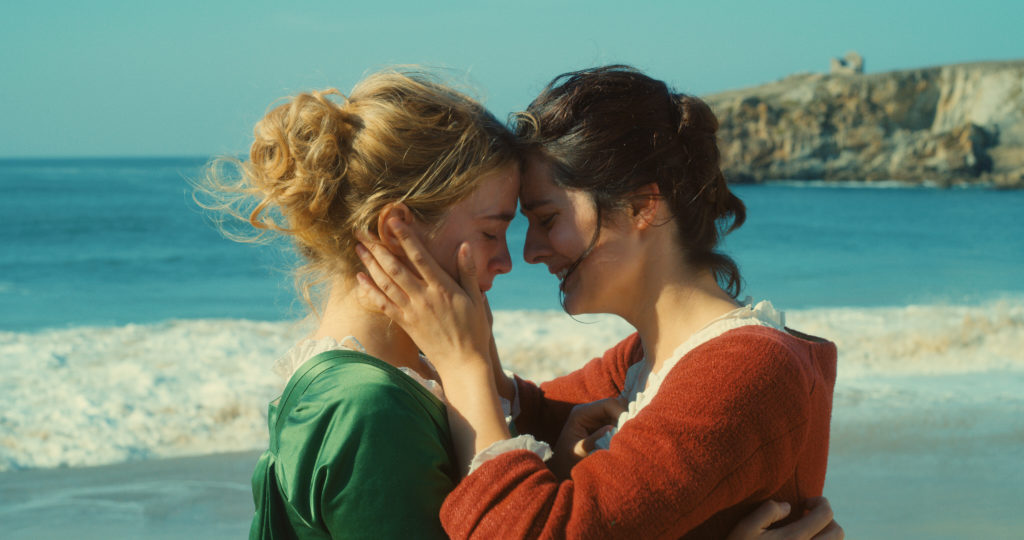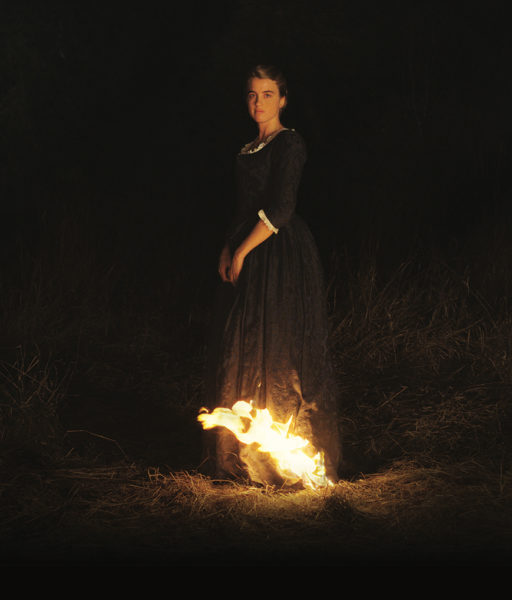Céline Sciamma’s Portrait of a Lady on Fire will take you on an unusual, stormy ride. And make no mistake; it will break your heart. Set against the white-washed isolated cliffs of Brittany at the end of the 18th century, Portrait tells the story of a female painter, Marianne (Noémie Merlant), who is commissioned to paint the wedding portrait of a young woman, Héloïse (Adèle Haenel). But Héloïse, unhappy with the betrothal, refuses to pose. Marianne is then obliged to paint her secretly, observing her during the day, painting her by night. As they grow closer, an explosive forbidden romance develops between the young women.
This is Sciamma’s fourth feature and arguably her most sensual and intimate. She has already explored concepts of gender and sexuality with her coming-of-age films Water Lilies (on which she worked with Haenel), Girlhood, and Tomboy. But Portrait of a Lady on Fire is her most autobiographical work yet. Sciamma, who won Best Screenplay and the Queer Palm in Cannes last year, wrote the part of Héloïse with Haenel, her ex-partner, in mind. The picture is also about artistic creation itself and the artist’s relationship to her muse. Boxoffice Prospoke with Sciamma about love, art, and creation.
Portrait of a Lady on Fire is about a love story but also about art and creation. It’s a very intimate film. To what extent is it autobiographical?
The movie is based on my experience as a filmmaker, that’s for sure, but less on actual facts and more on ideas, the idea of looking, observing, and collaboration, that I want to defend. As for the sentimental aspect of the film, it proposes a certain philosophy of love that for me is an aspiration.
How did that affect your experience of making the movie?
It was a very emotional and sentimental set in part because it’s my fourth collaboration with my producer [Bénédicte Couvreur], because Adèle and I were working together again, because of meeting Noémie, and the birth of that duo. The emotions were really what was felt in the present on set, and I think that you can feel that in the movie.
What were some of your influences?
There weren’t really any influences. We play with the imagery of the 19th century, rather than the 18th when the story takes place, which is a little bit more romantic in terms of art history. And in some moments we do refer to novels of the 19th century, most notably with the importance of page 28 in the film [Marianne draws a sketch of herself as a keepsake on page 28 of Héloïse’s book]. That’s a very literary idea. So, we do play with these codes, but at the same time we tried to get out of conventions in the most radical way possible. Overall, I can’t say that there are a lot of references to the movie. The film tries in a new, candid way to invent its own language. We looked at a lot of paintings with Claire Mathon, our DOP, but more to think about how we would film the paintings. We didn’t have any pictorial references other than maybe Corot, who painted a lot of female portraits, especially outdoors, and you feel like the light emanates from them. So, we did focus a lot on the light around characters.
One of the themes of the movie is the women’s emancipation through art and sexuality. Why is it important to talk about this today?
Because I believe that love stories have a big influence on our lives. It’s an ambition for every individual and all of our society to be in a couple, for example. It’s very rare for people to decide to withdraw from that marketplace. So, love stories influence our lives, the way we see the world, and putting emancipation, rather than possession or living together forever or a tragic end, at the center of a philosophy of love I think offers a positive dynamic. I’m very interested in depicting other representations of love.

One of the most touching things about the film is how you deal with memory in a love story.
It’s a bit the same dynamic: that a love that is lived is a love that’s received. That’s why often in love stories, it’s necessary that relationships end so that we can bring them with us and not leave them in the theater. In the end, the frozen image of a couple walking towards the horizon doesn’t leave us with much. So, it’s the idea that what has been lived can be looked at and can nourish our future loves. I really believe in that, in memory as a dynamic.
The idea of looking at something and being looked at is very present in the film. Can you say a few words about that?
It’s the idea of a mutual gaze between two subjects that are in love rather than from a subject to an object. The film plays with glances a lot. Also, the film is being seen by the audience, but the film also looks at the audience. That switch, where the artist understands that she’s also looked at, is a funny and surprising way to look at ideas, because cinema is about ideas.
When Marianne paints the first portrait that Héloïse hates, she tells her that there are conventions, rules, ideas about how to paint a portrait. It immediately makes you think of the oppression of the male gaze. Was the act of painting itself a deconstruction of the male gaze and an echo of your own work as a filmmaker?
Absolutely. And again, it unravels what’s really behind these types of relationships. I don’t try to subvert the relationship between the model and the artist in an incantatory way. I deeply believe that women had the opportunity to create as models in studios and they seized that opportunity and truly collaborated with the painters to create these works of art. That’s how I see it when I’m on set, and I don’t think it’s just me, I think that’s the reality of it. They are creators.

Is there a “female gaze”?
There is one, de facto, yes. It’s not because you’re a woman that you do that but it’s a decision, a thought process. Since the male gaze exists since cinema does, the female gaze, even though we can’t really put together all films that do that, is at least a vigilant, conscious, and playful attempt to break free from that convention. So, I think it’s something to be welcomed.
For you, what are its characteristics?
To not objectify the characters, whoever they are, to share their experience, and to propose new power dynamics on-screen.
Why is music almost completely absent in the film?
For replication [of the character’s experience]. The movie also talks about the impact of art on our lives. And we see that Héloïse wants to listen to music, to read books, but they’re not easily available to her. So, there are certain moments where we live this fabulous access to beauty and arts with her. If you want to make the audience feel what the characters are experiencing, you can’t give them music.
Throughout the whole movie, the love story unfolds through painting. That’s how they reveal each other to one another. Why is it music in the end that moves Héloïse so much, that releases that emotional storm, as opposed to painting?
Because there’s a story between her and that music. It’s a music that someone she loved loves. It also shows that relationships educate us about art because love gives us an appetite, a desire for art.

It’s rare to have almost no men in the film. What do you think that means for a male audience?
I offer them a cinematic experience where they can discover a different experience from their own and where they can, at the same time, get out of that conventional framework. Getting out of the framework has the same impact on women and men, I think. In the end, taking men out of it is a way to put them back in and make them look at themselves. It was also because I didn’t want to mistreat anyone in the film, meaning that if there was a male character in the movie, he would have been the opponent. I’m not interested in objectifying anyone. I didn’t feel like doing that and make oppression felt rather than tell that story.
Why is it important to watch this movie in a theater?
It’s important. And what’s really important is that the film is released in theaters. The movie is conceived to be a theatrical experience. From the point of view of its beauty, the aesthetic, visual, and sound experience but also as a collective experience. It’s made to be seen like that.



Share this post